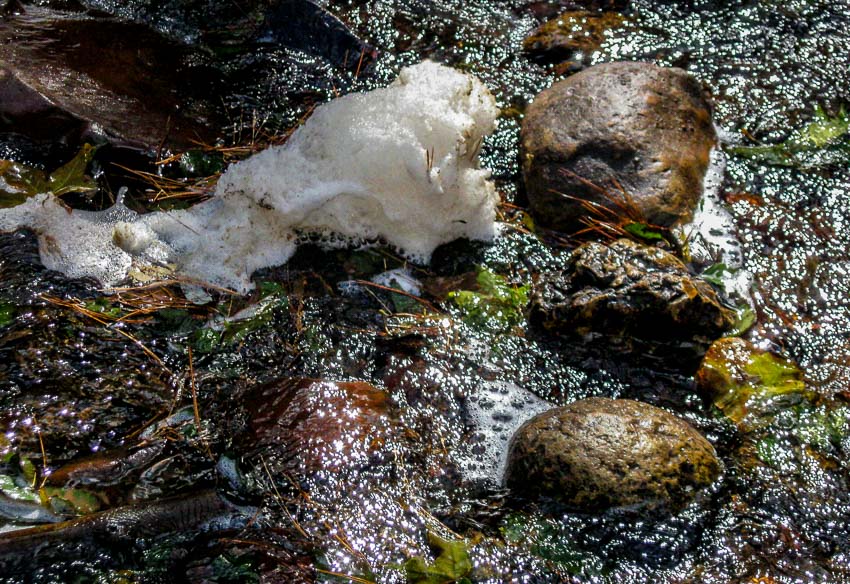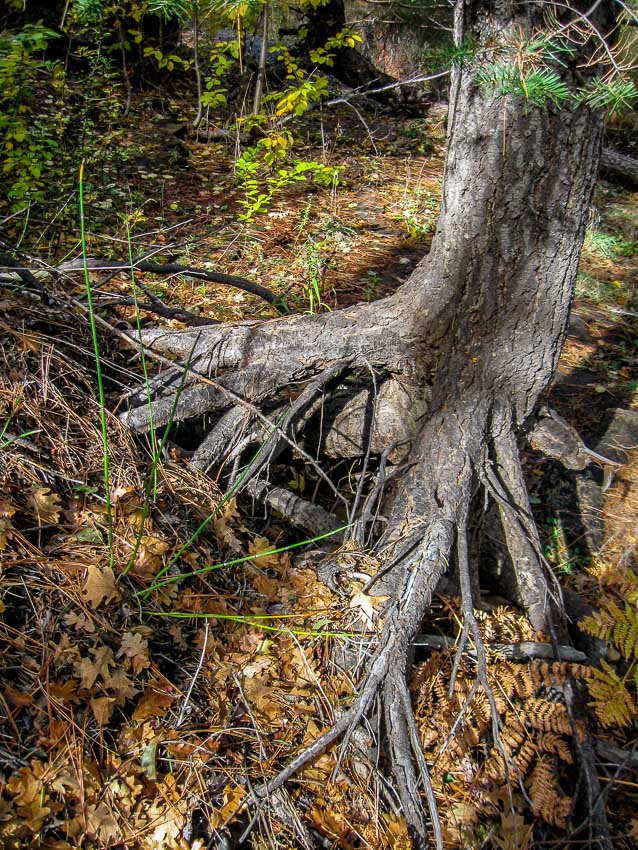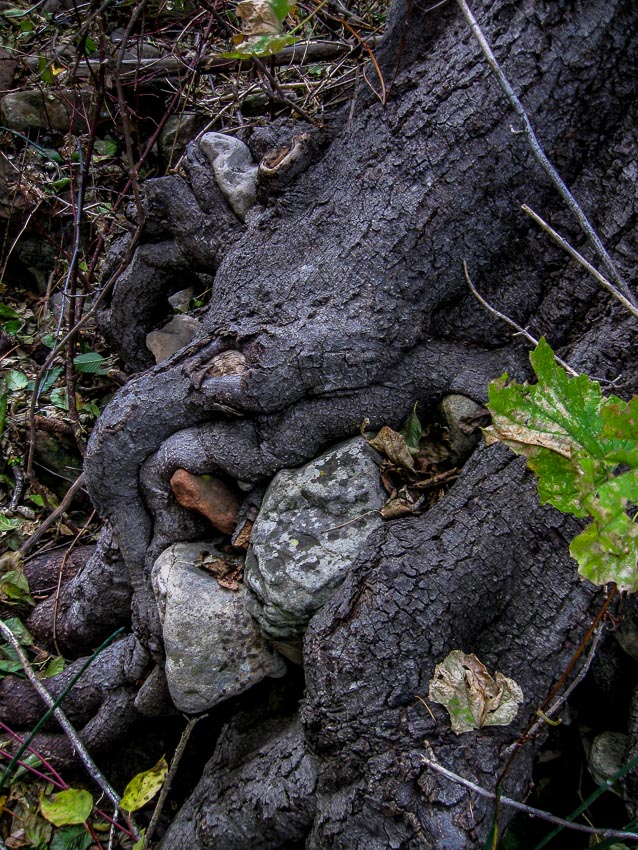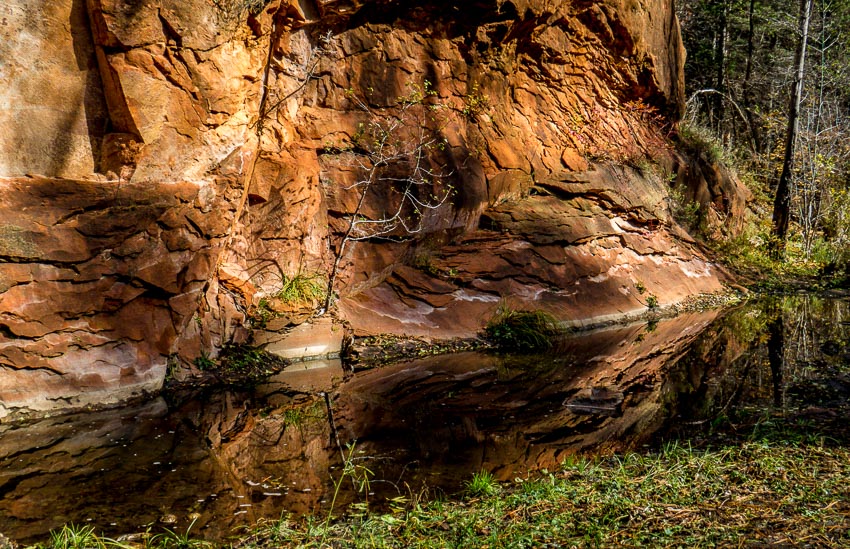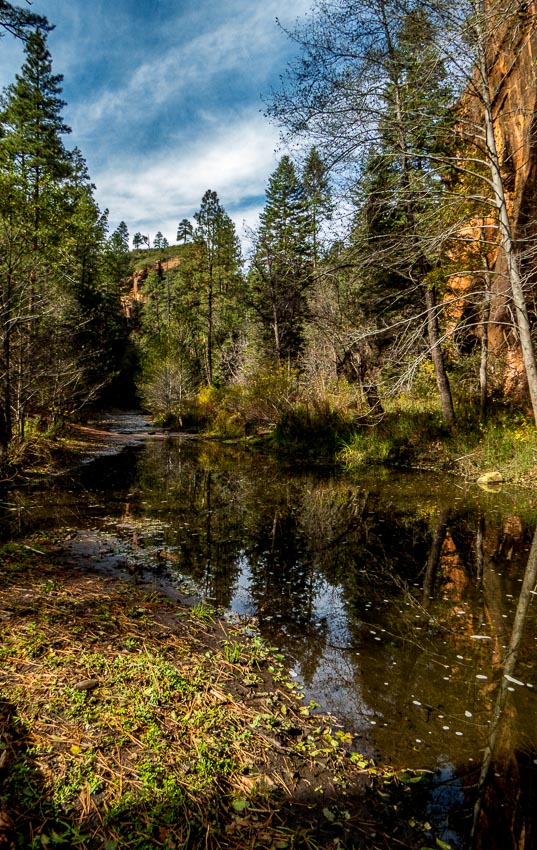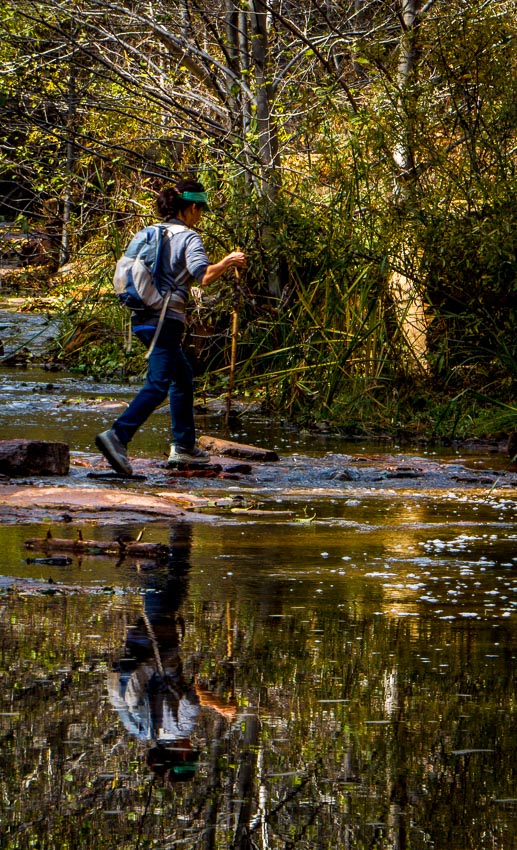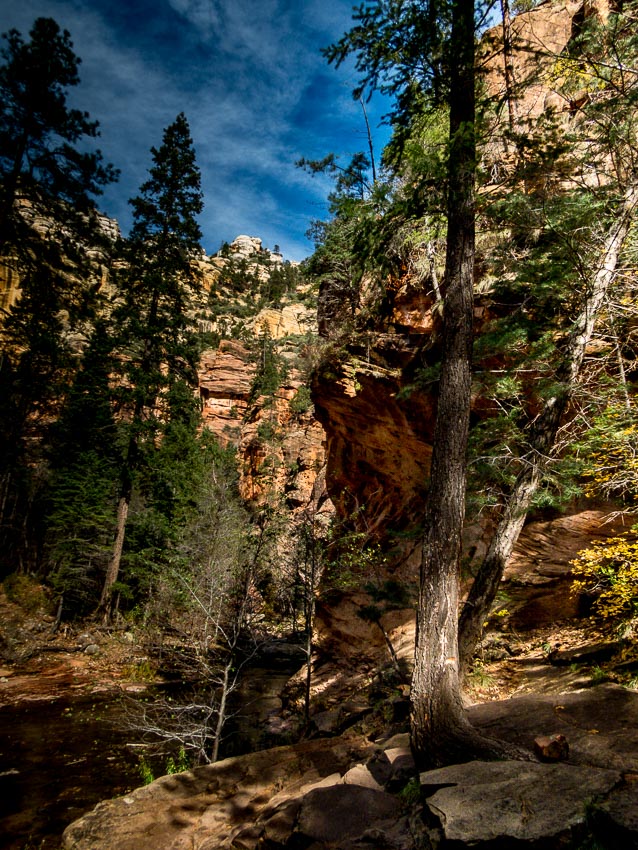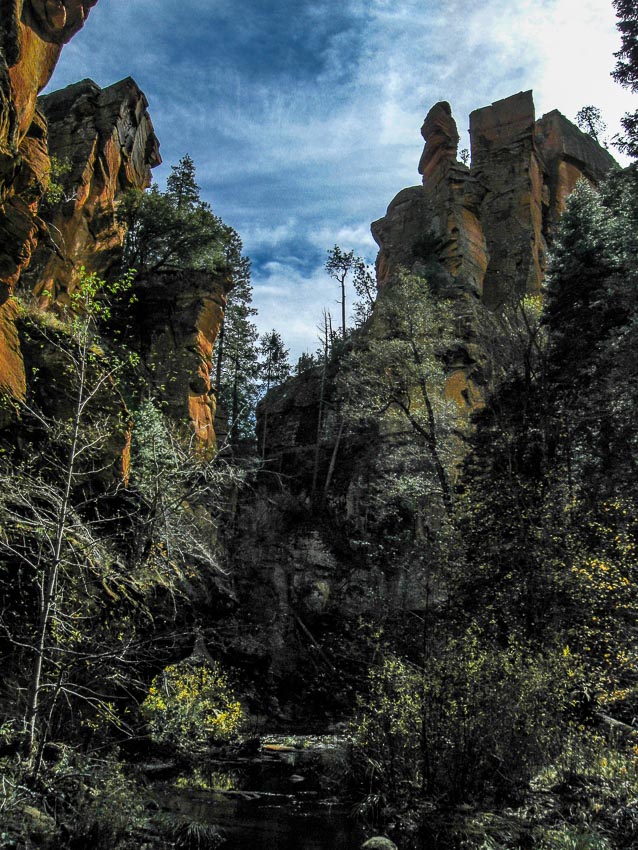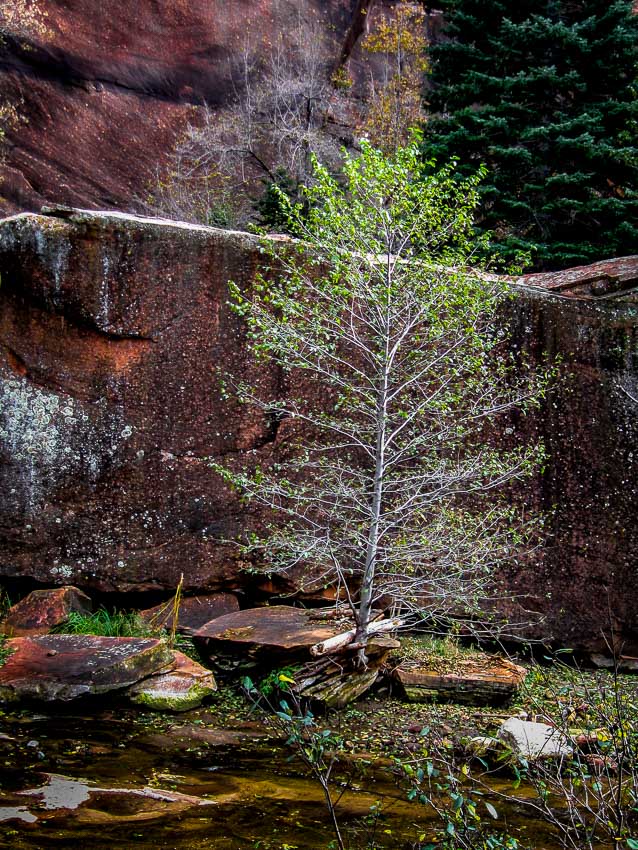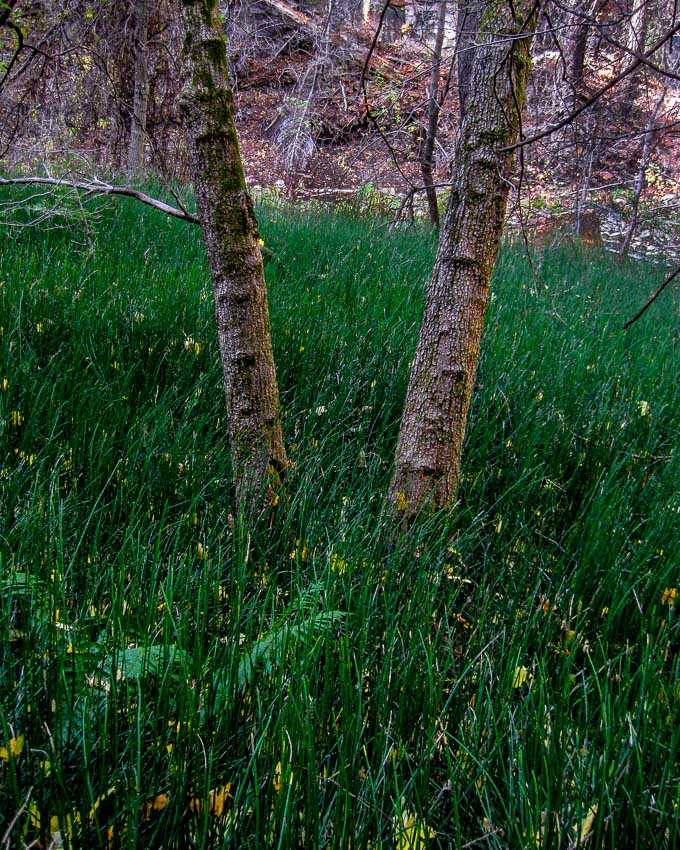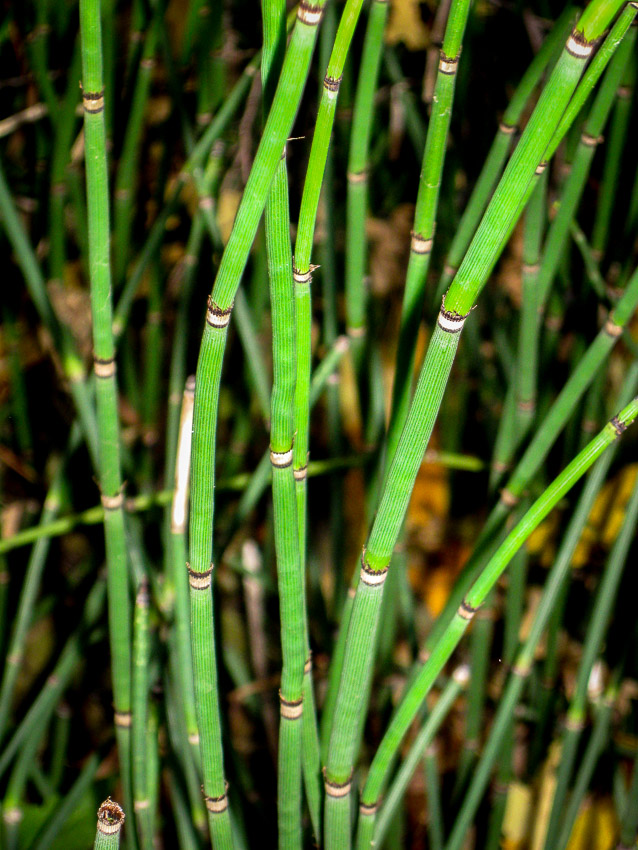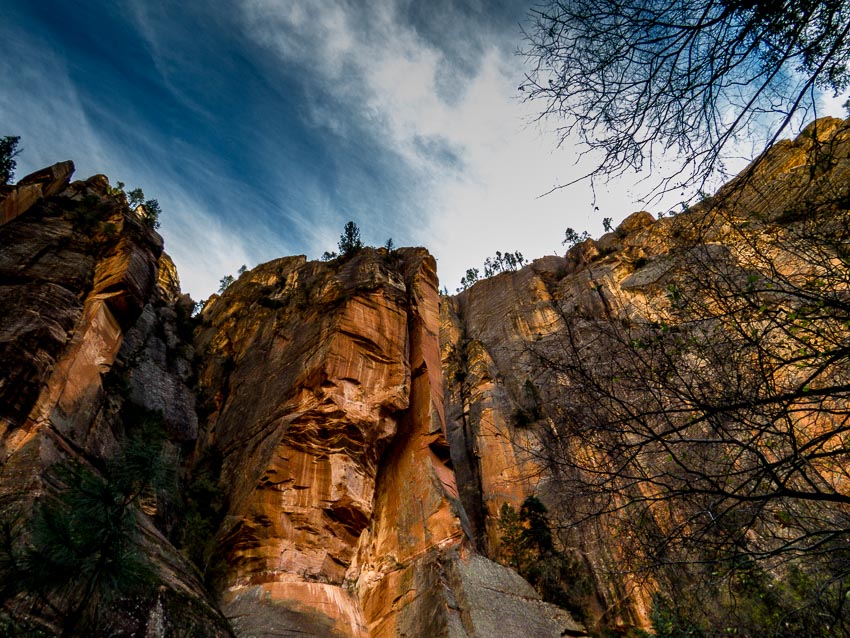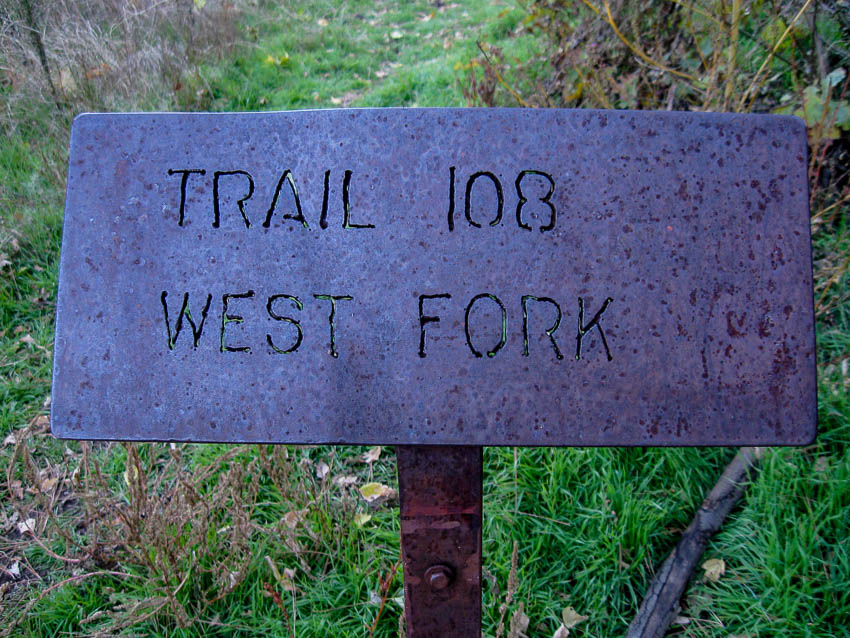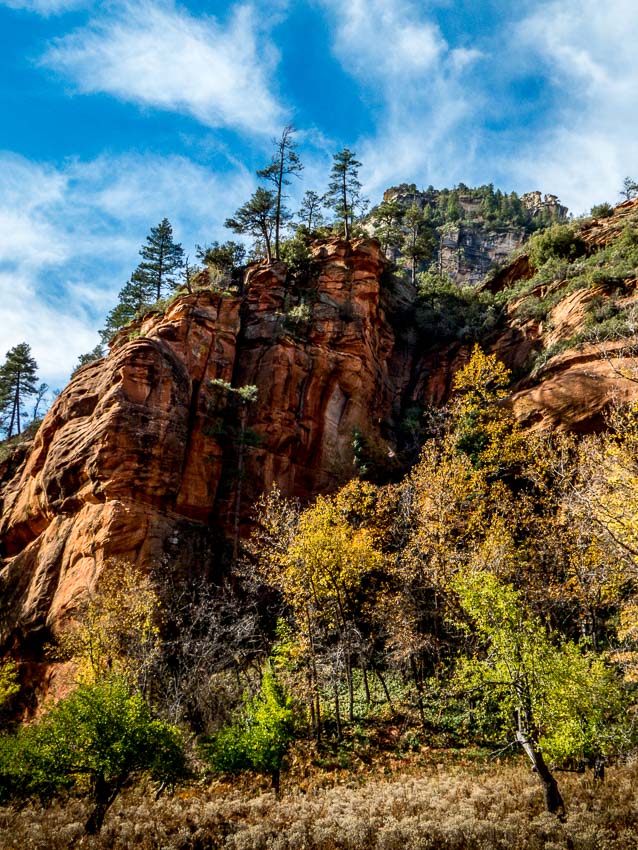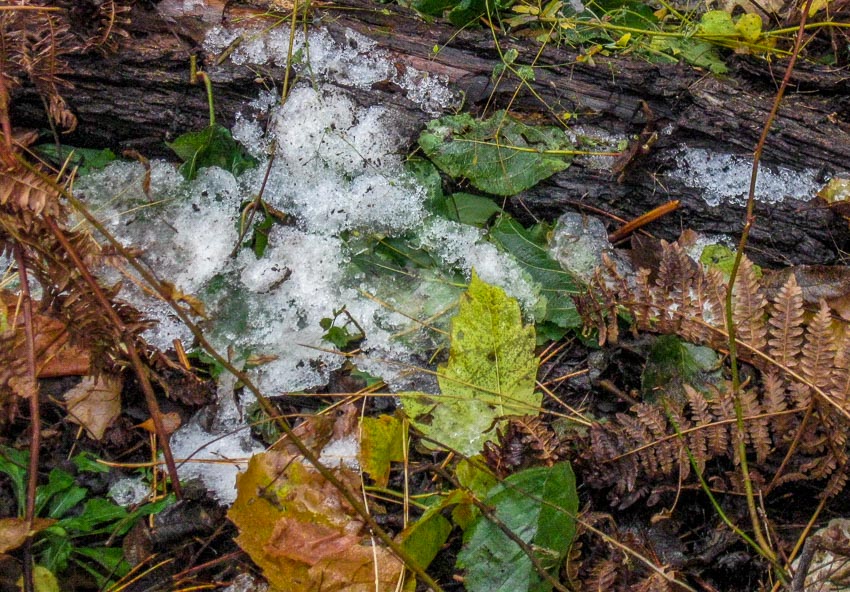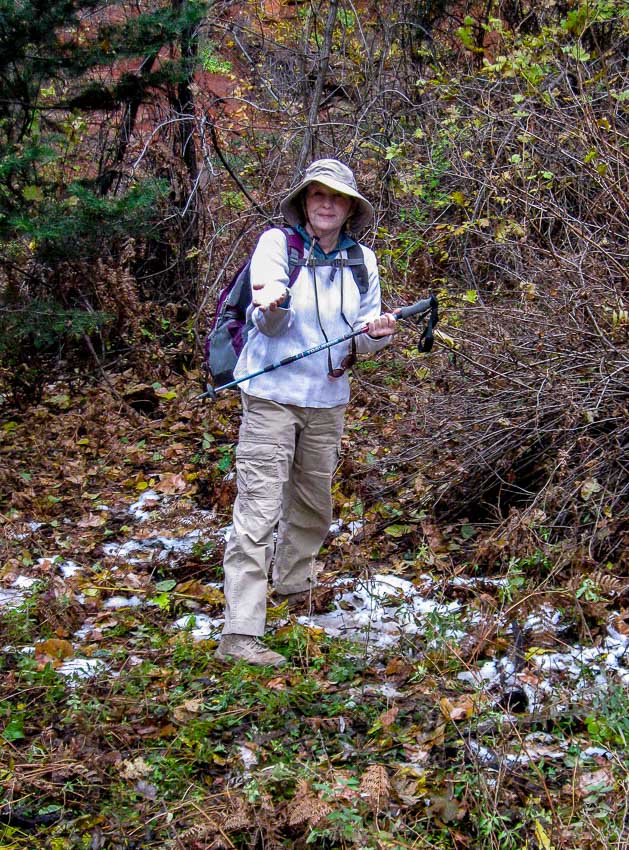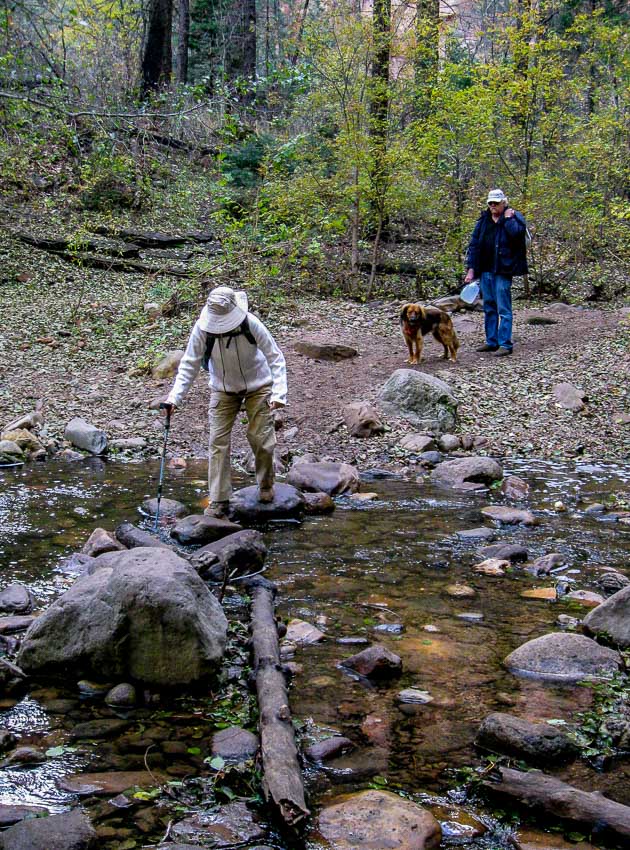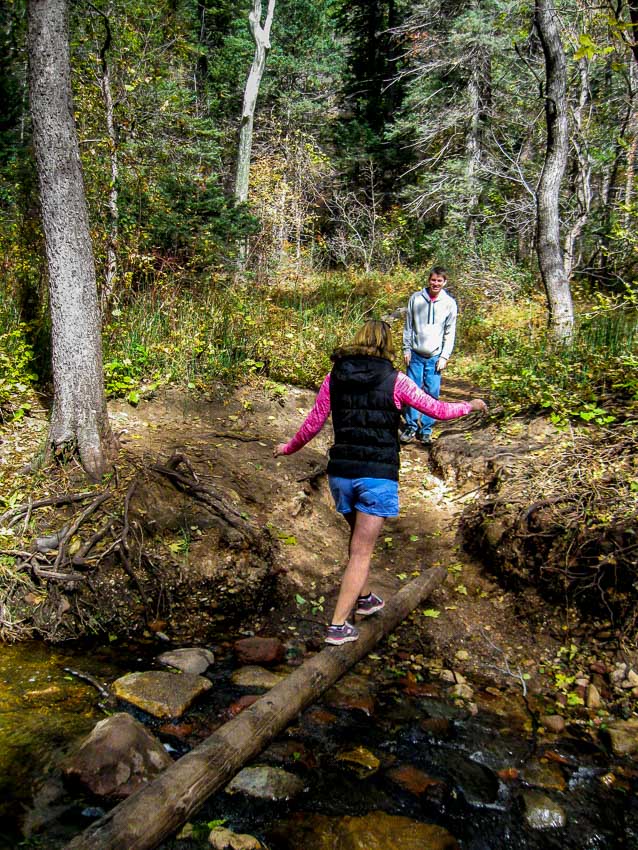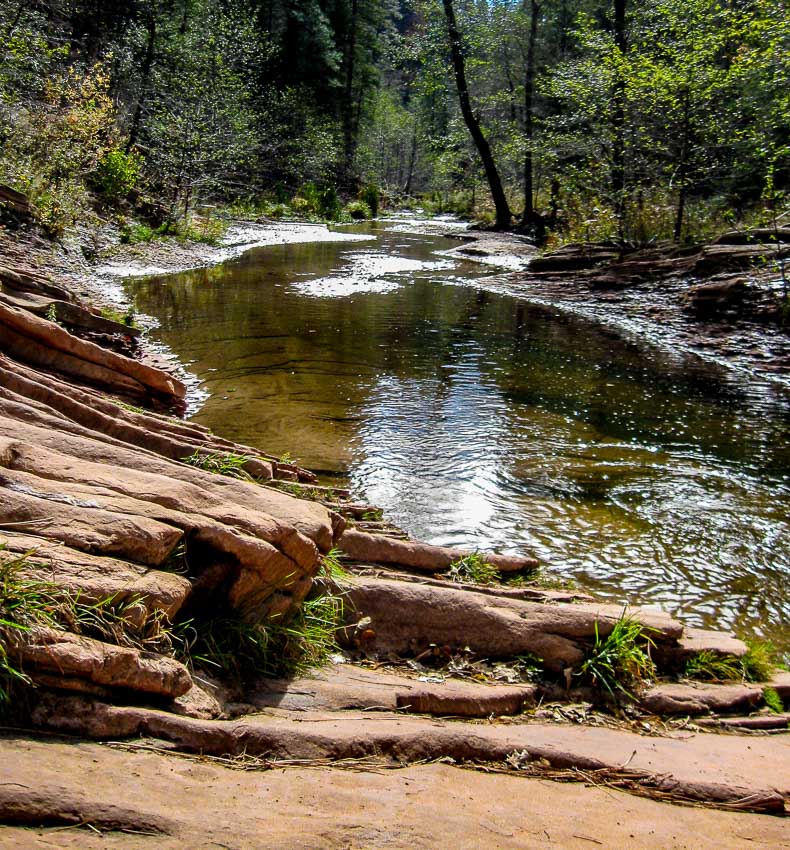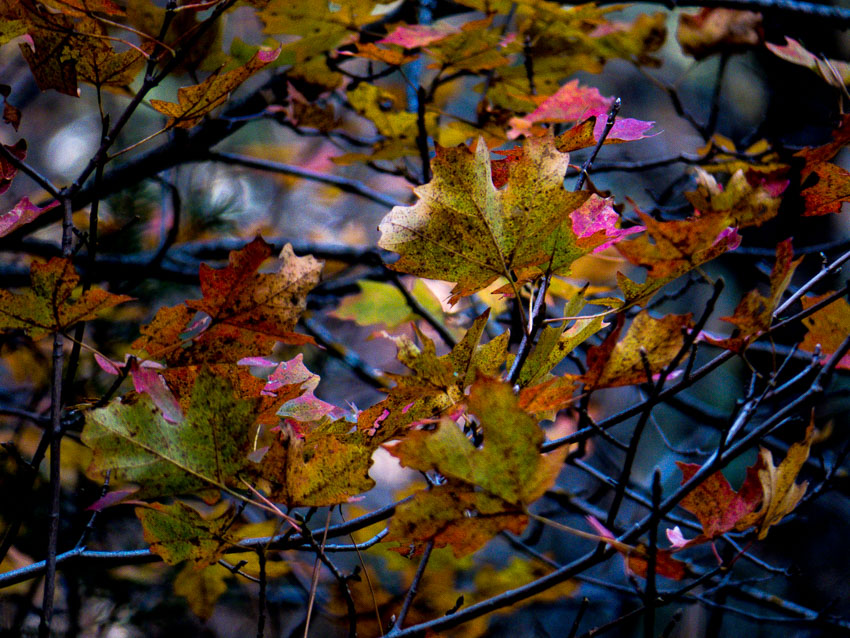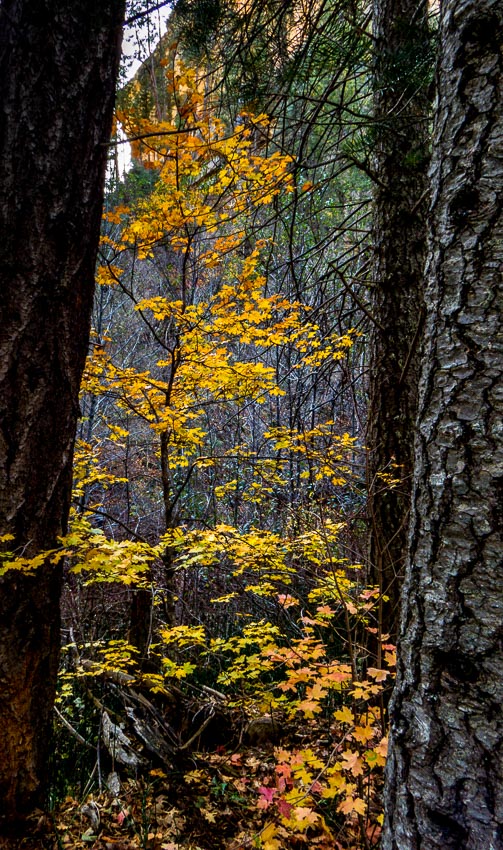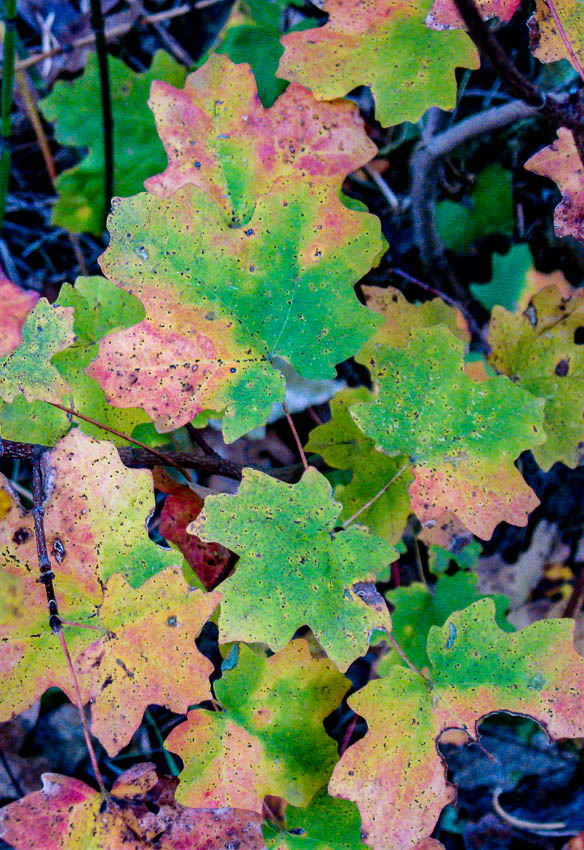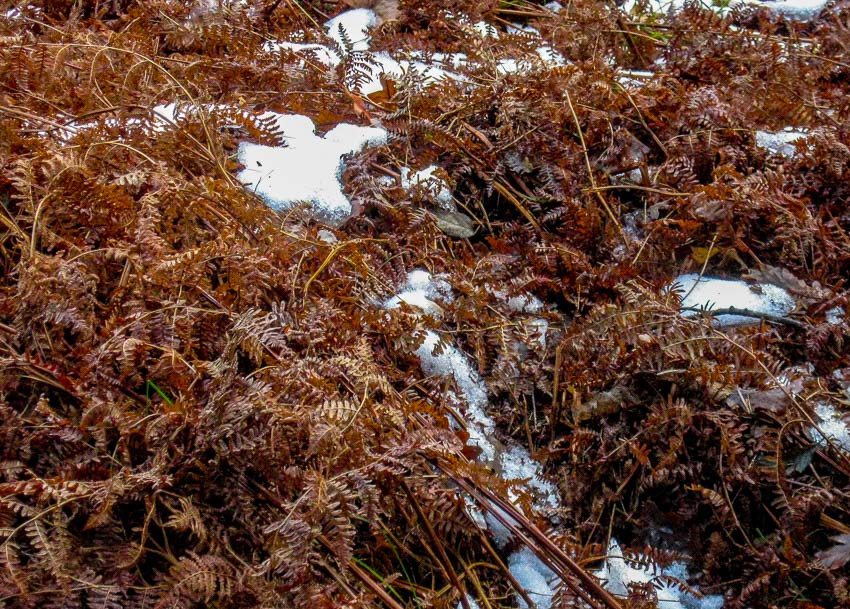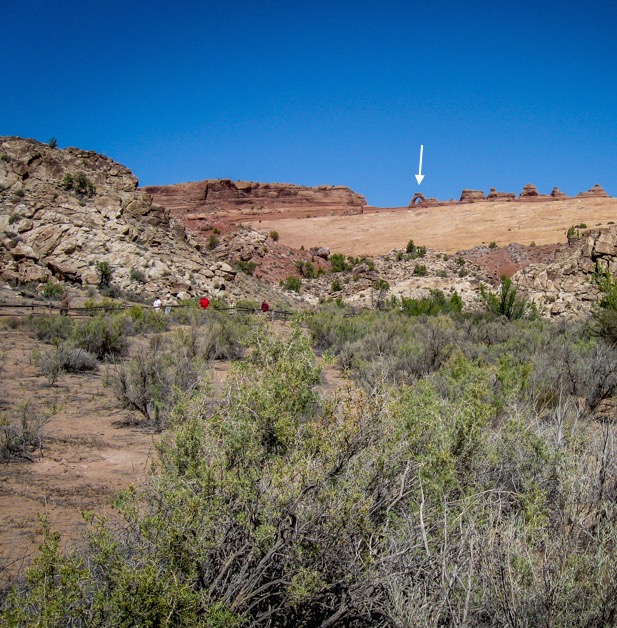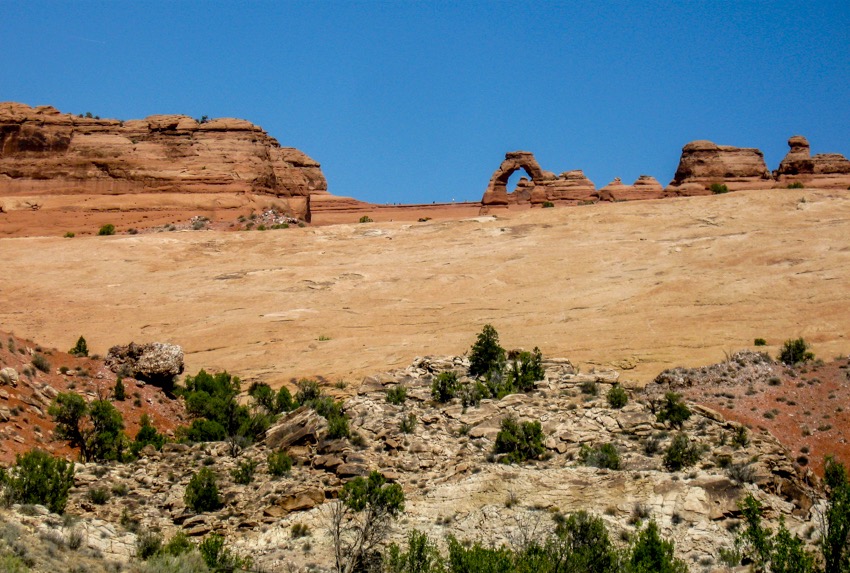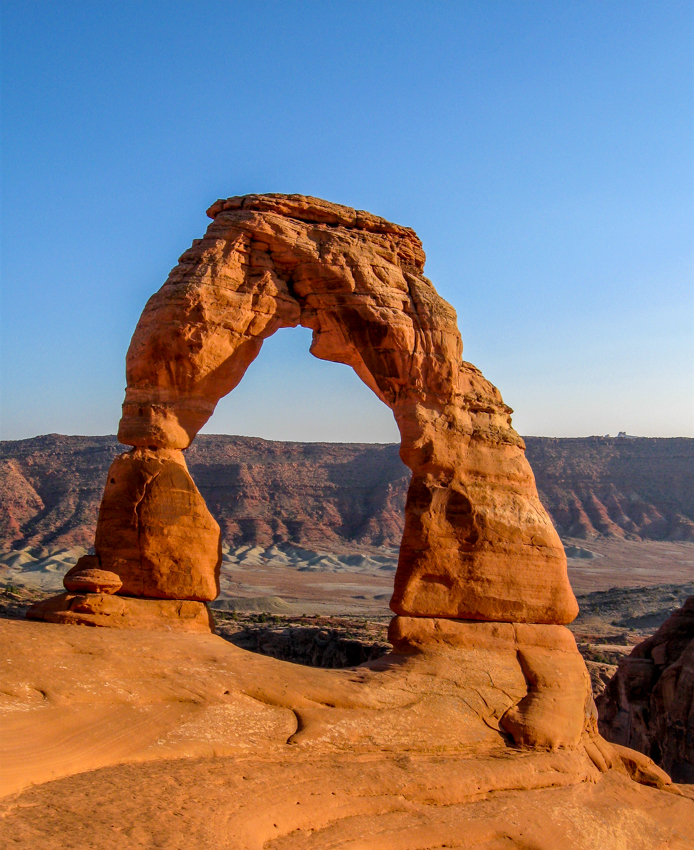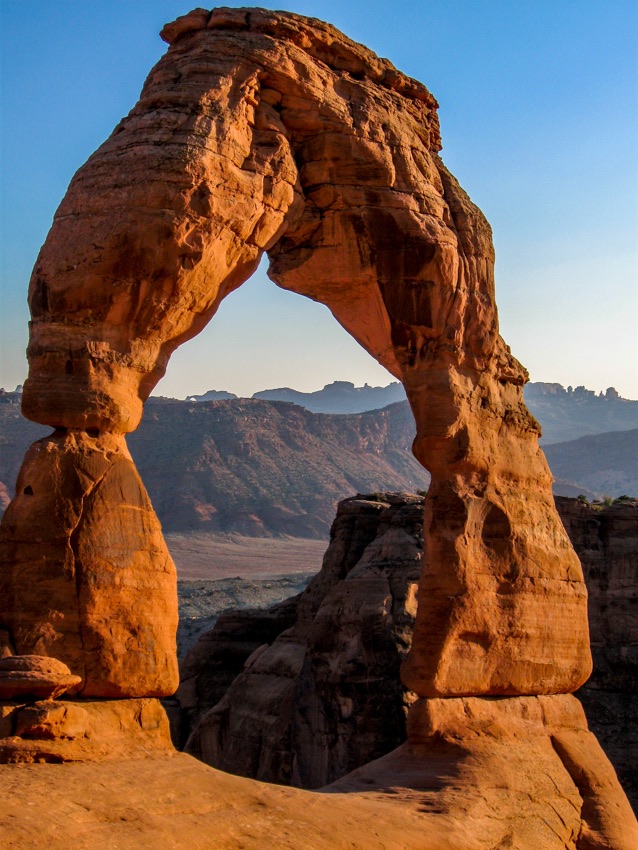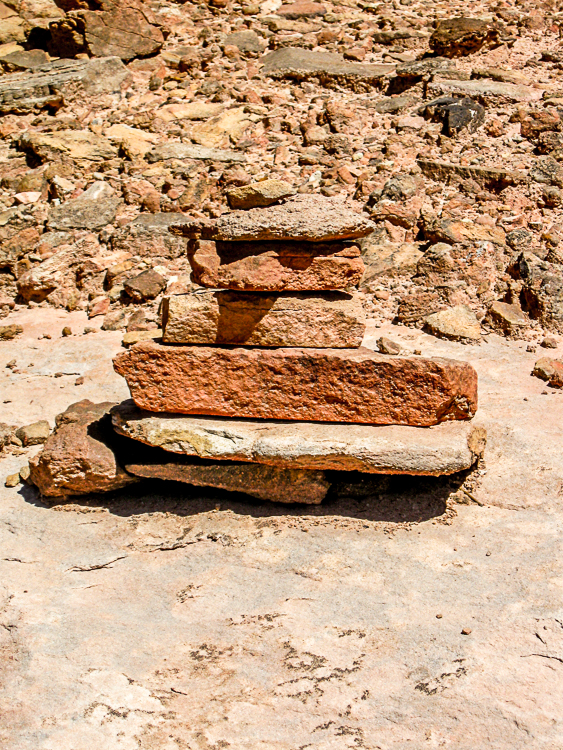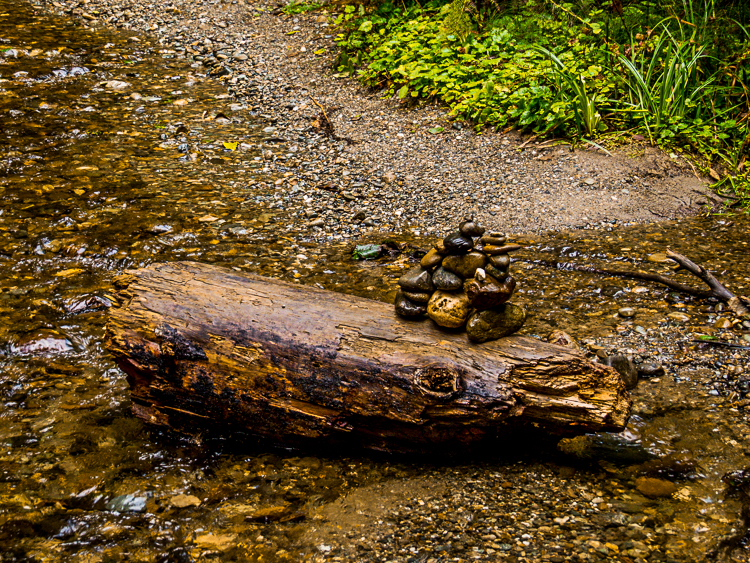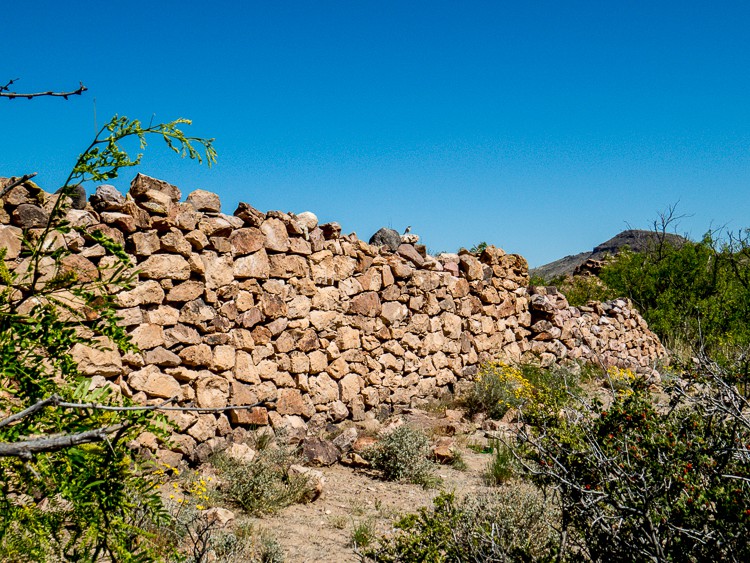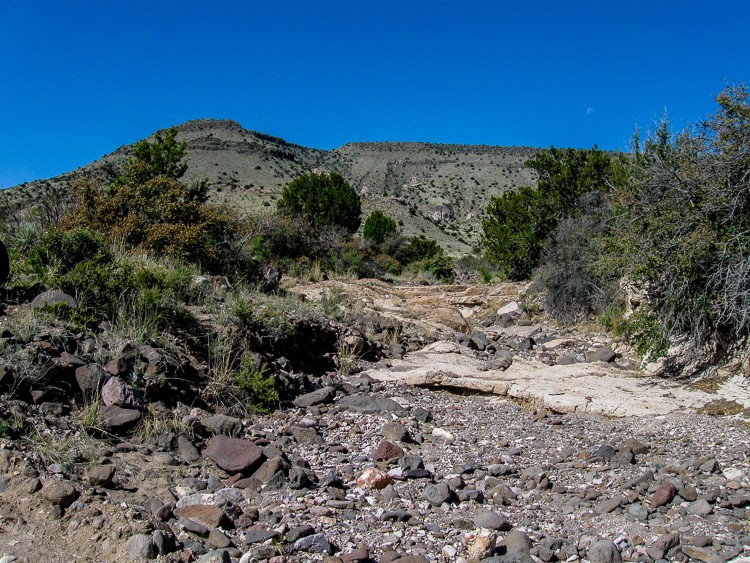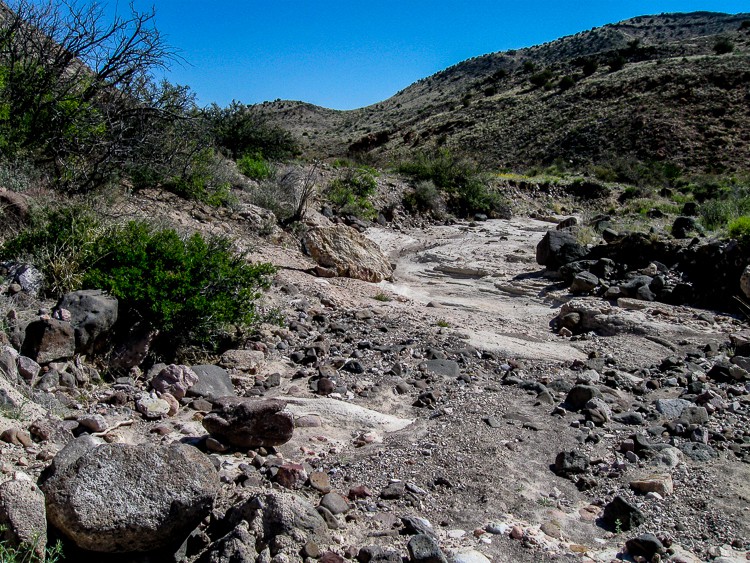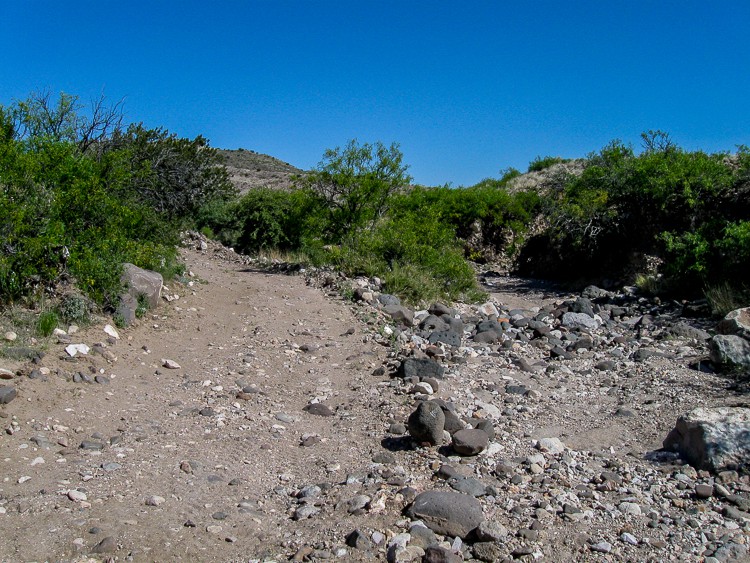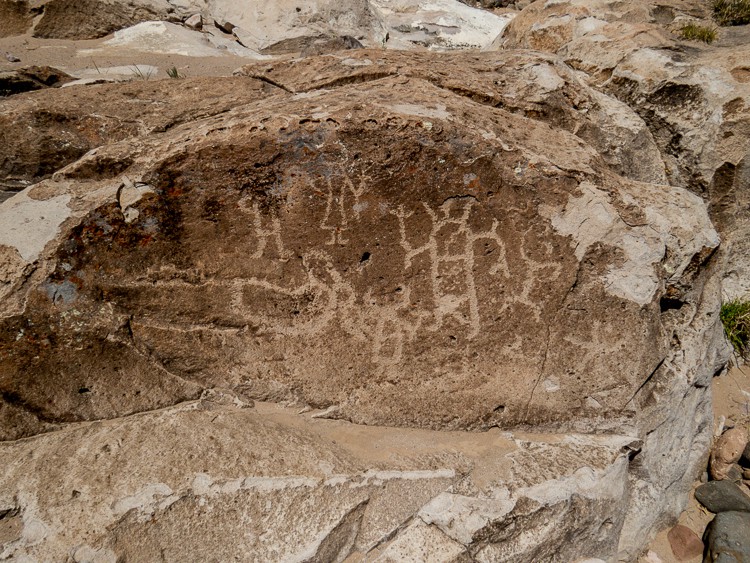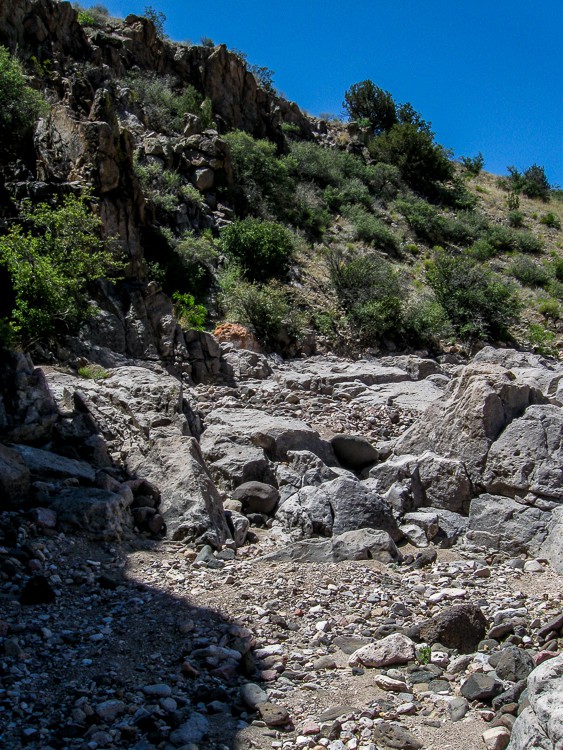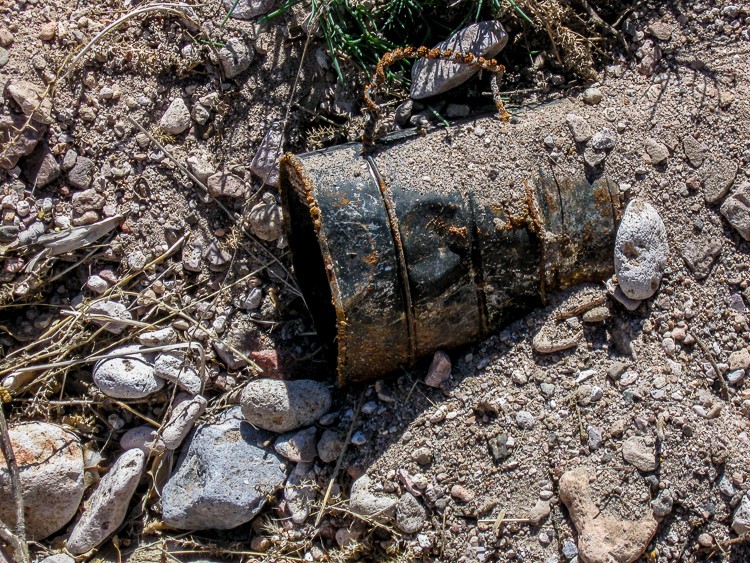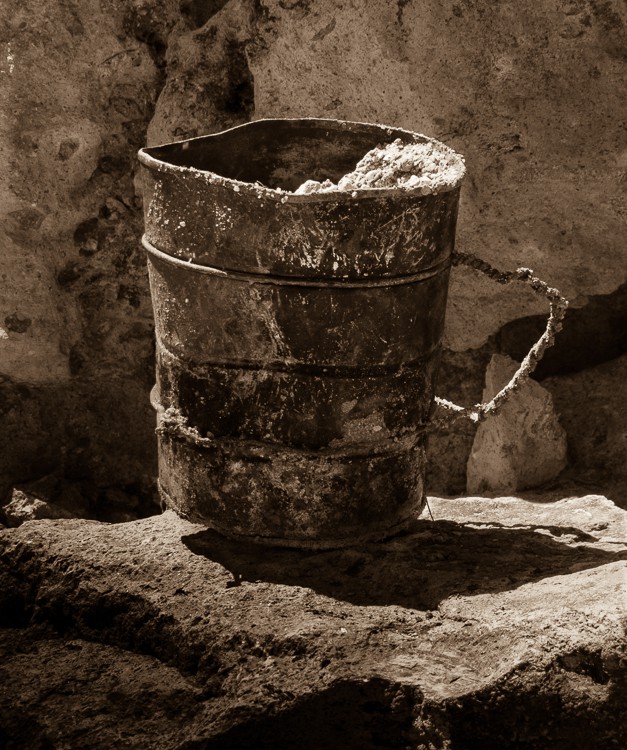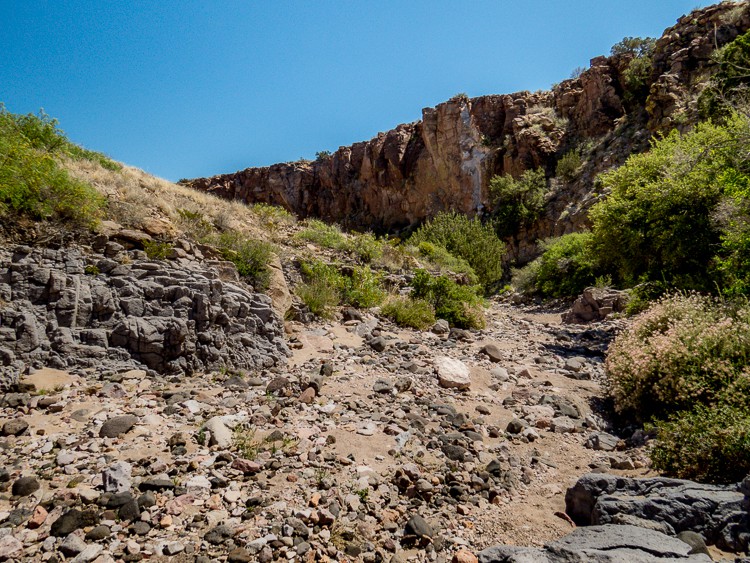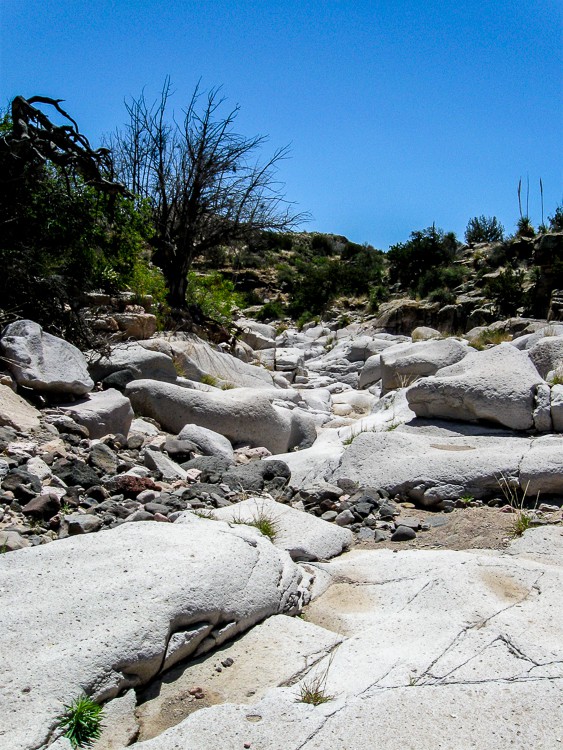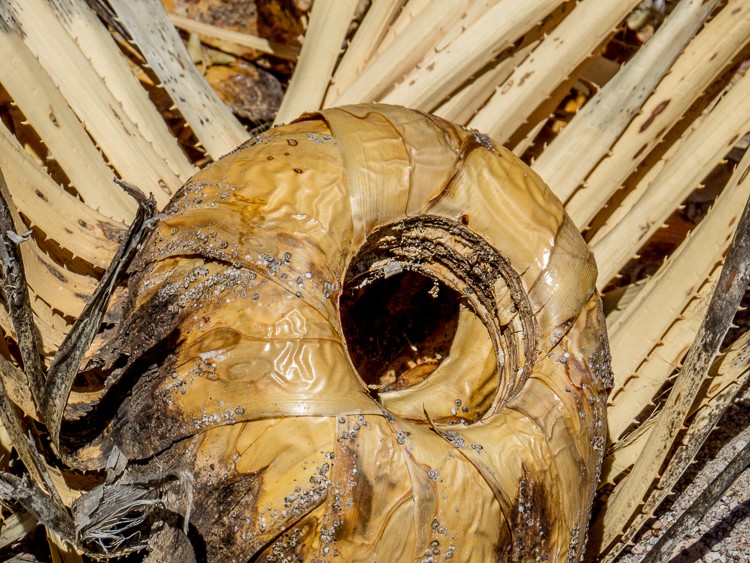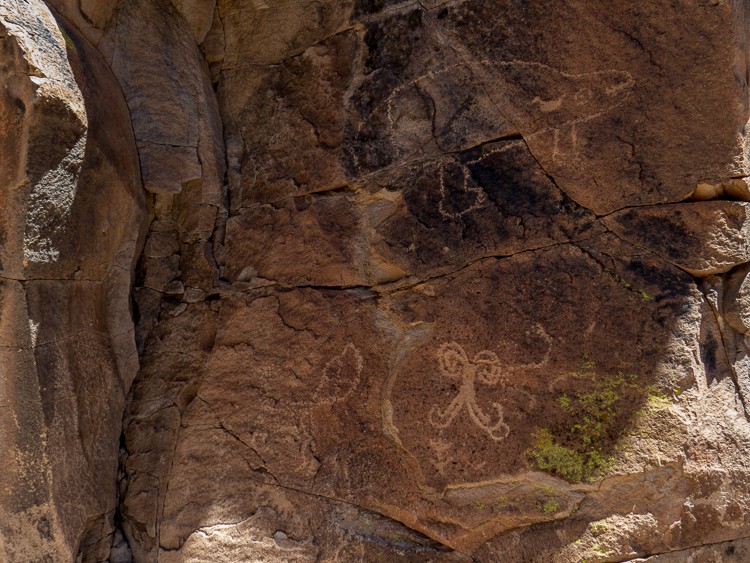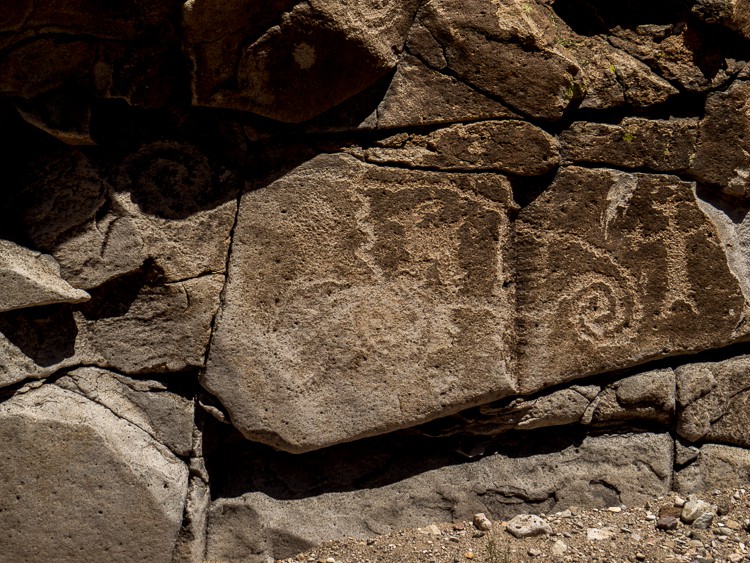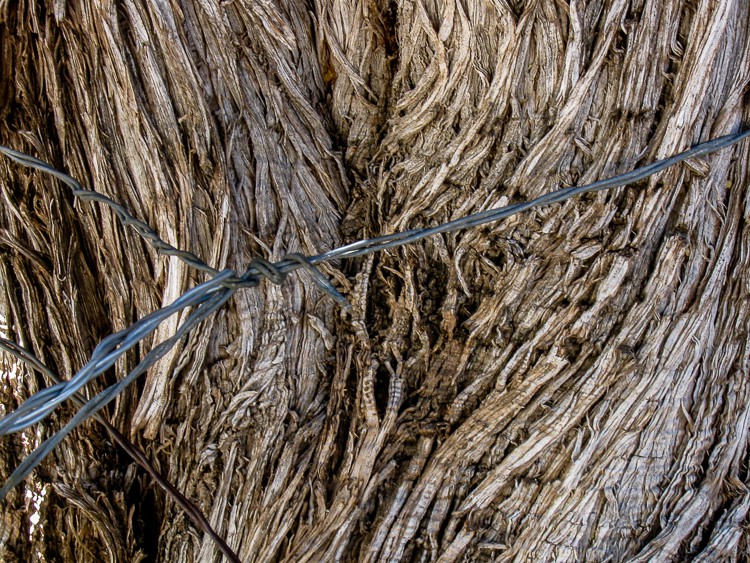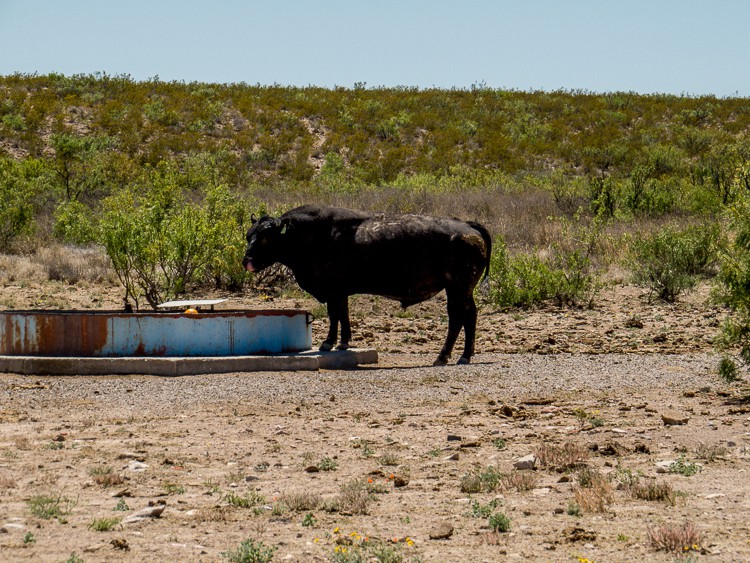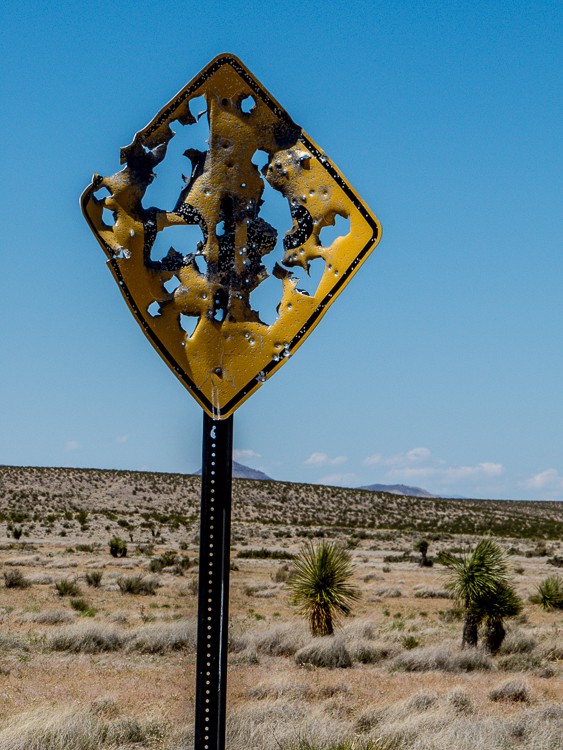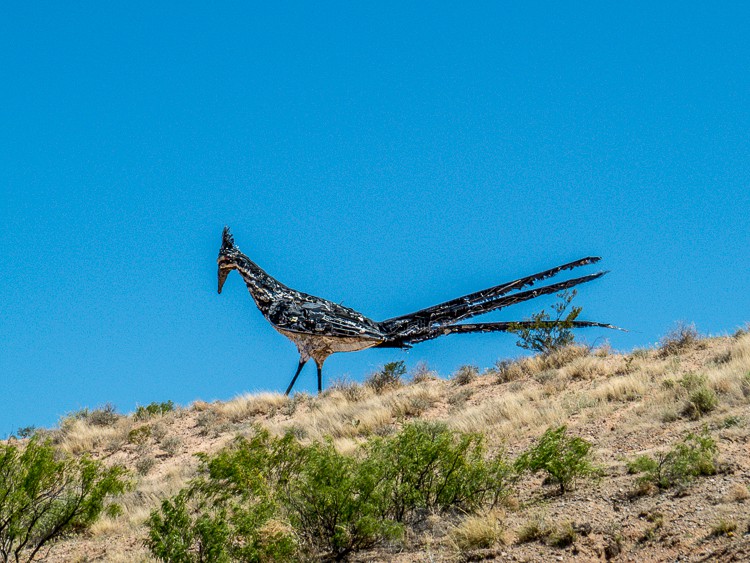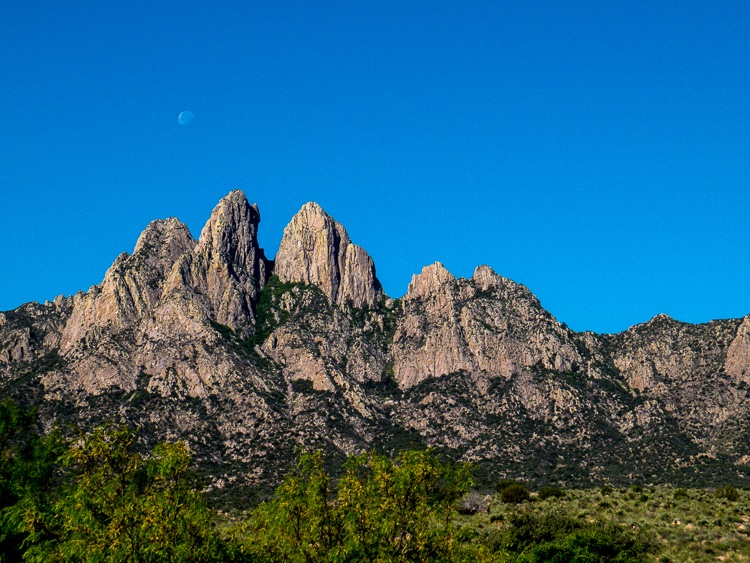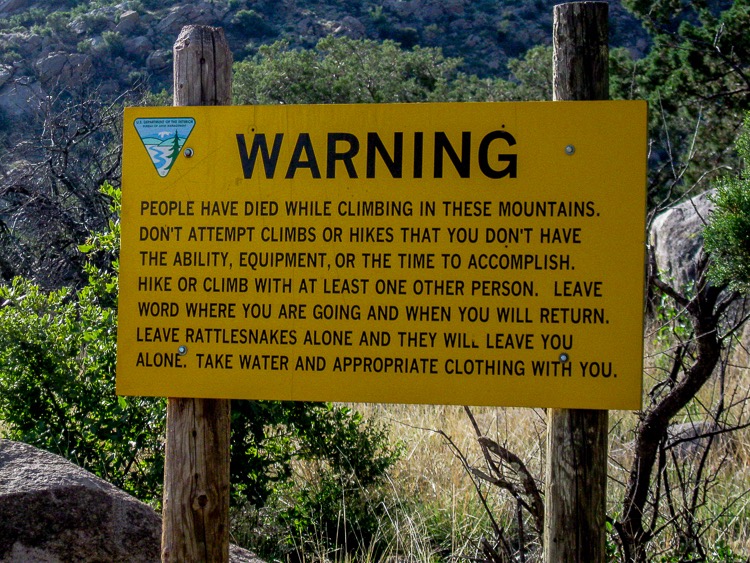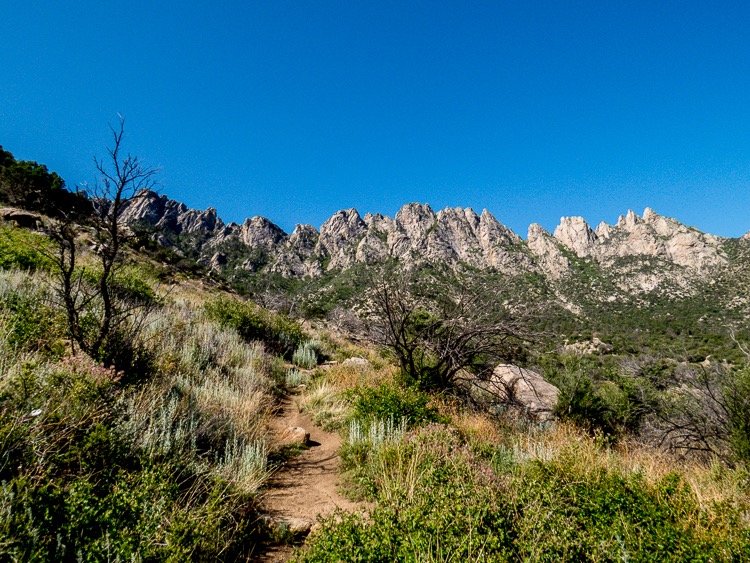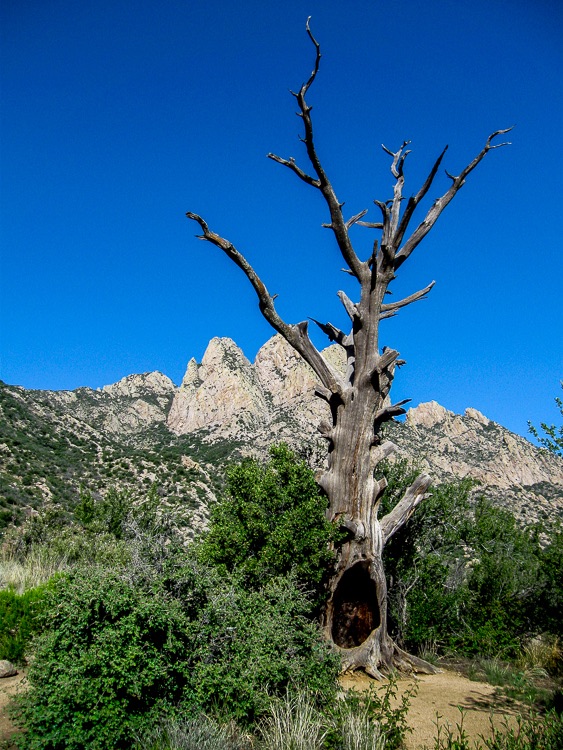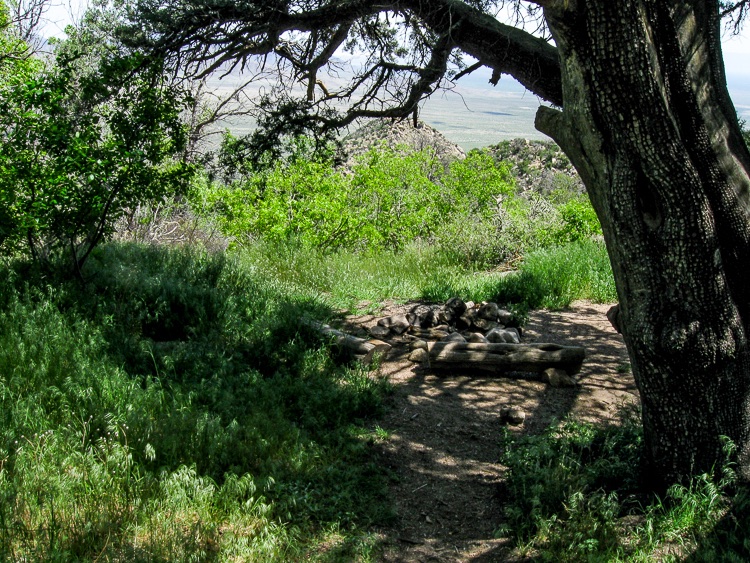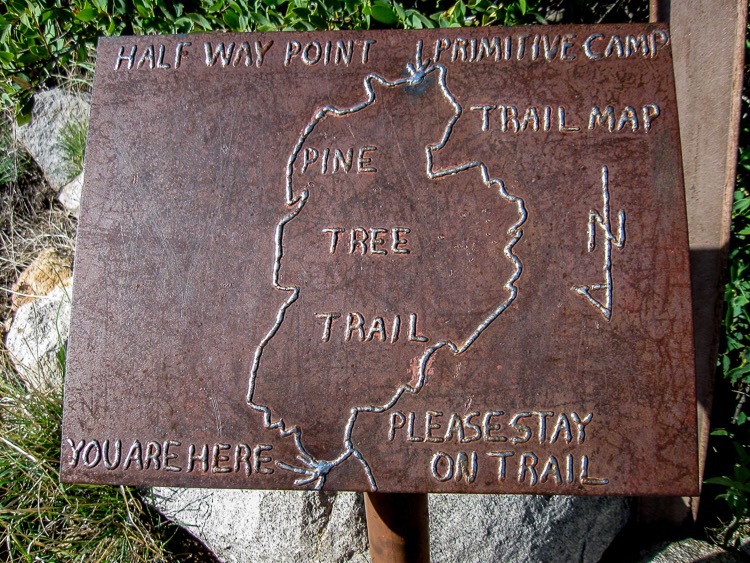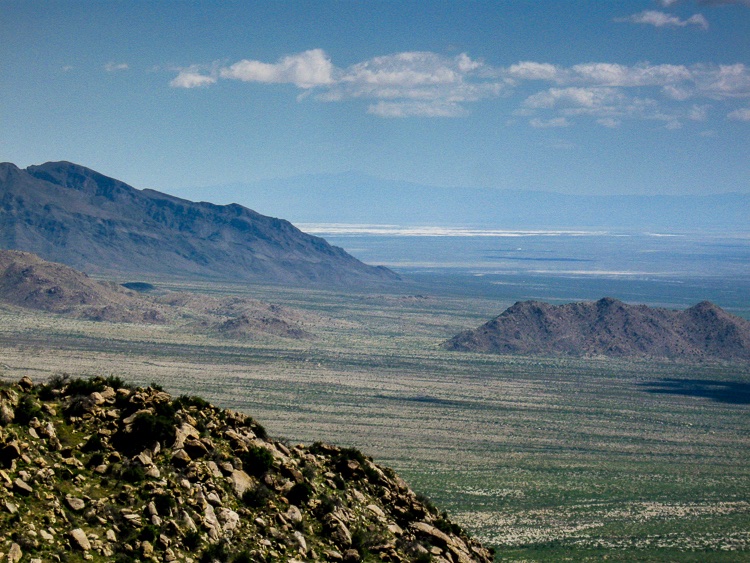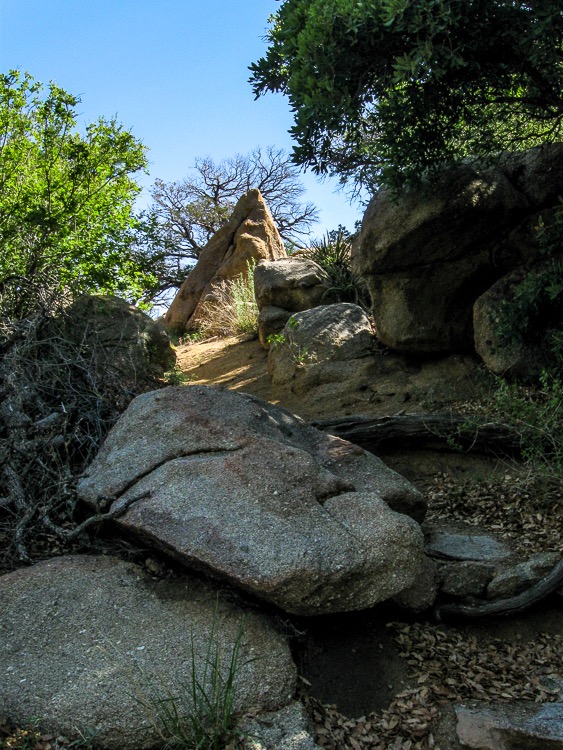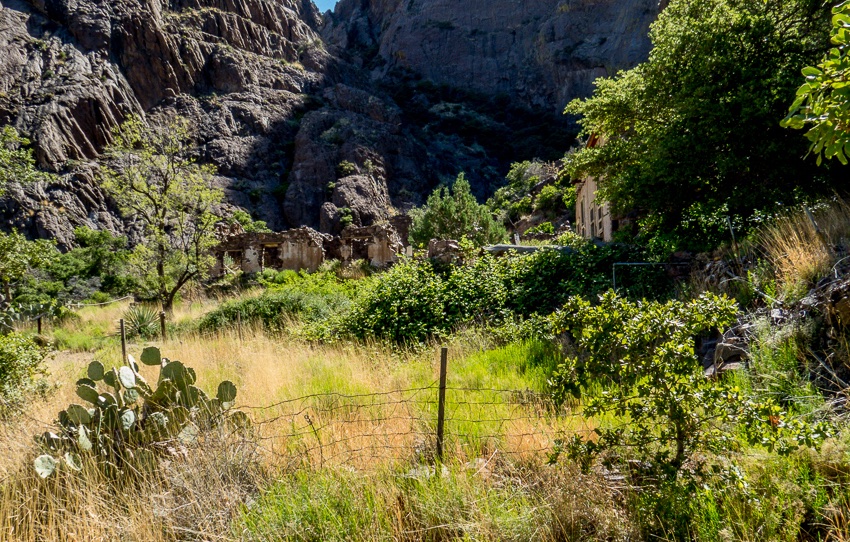While hiking along the West Fork of the Oak Creek just outside of Sedona, AZ we came across this wall and cliff of fractured red rock highlighted by light and dark colors most likely from minerals in the rock and the effects of running water.

Here’s a closer look. Trees grow along the overhanging shallow shelf above the cliff.
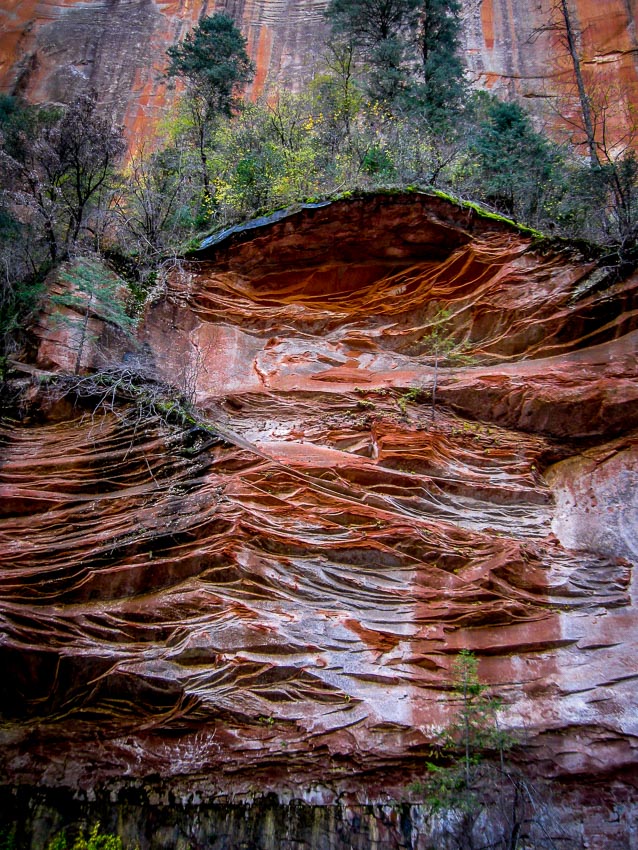
Other walls along the trail had interesting colors and markings as well. This nearly black patch was highlighted by a stream of white reminiscent of a plume of smoke from a cigarette.

We weren’t the only life form enjoying this brisk autumn stroll. A orange and black beetle was weaving in and out of the leaves and appears to be of the Nicrophorus defodiens species which enjoys eating fungus.

A colorful leaf waiting for its close up and I obliged.
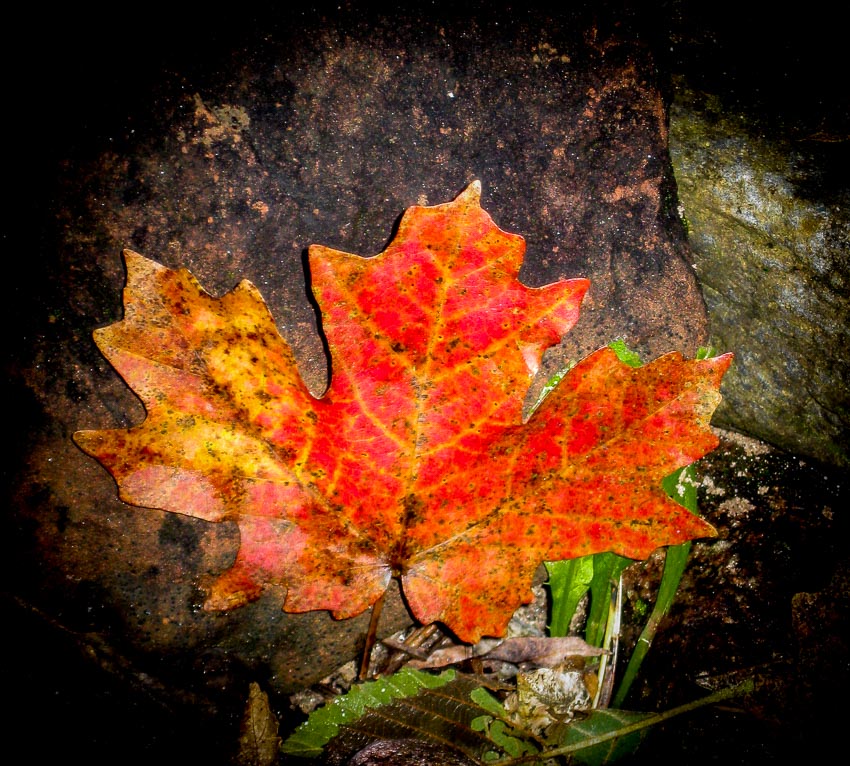
On the return trip back to the trailhead, we revisited some of the previous sites this time lit with the afternoon sun.

There were moments when the contrast of the dark and the light was stunning as with the golden-green leaves against the dark browns and grays of the trees
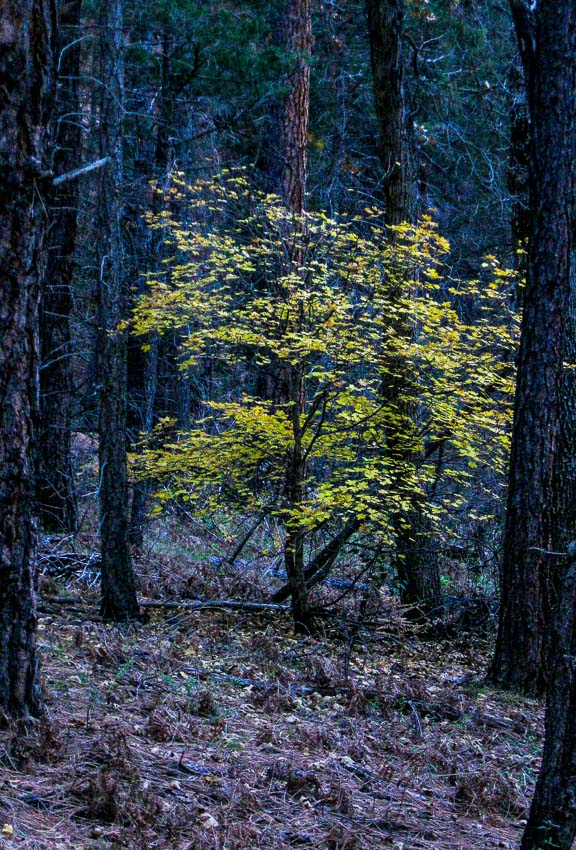
A bit disheartening are scenes like this where someone decided a tree branch needed to be adorned with and old sneaker or shoe.
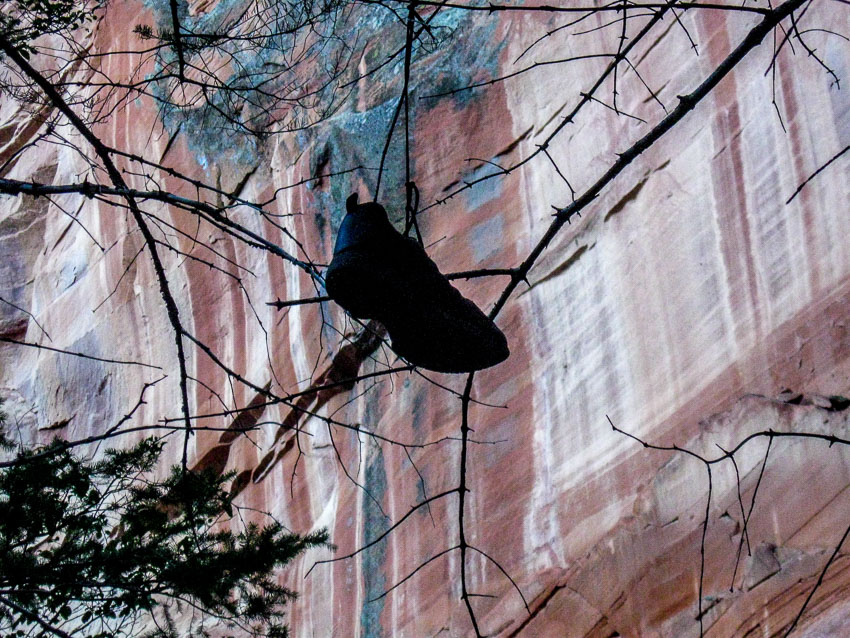
At the beginning of the trail, not too far from the trailhead, are the remnants of Mayhew Lodge that was opened in 1926. The lodge remained an active retreat until 1968 and is noted for attracting a number of celebrities such as President Herbert Hoover, Walt Disney, Jimmy Stewart and Clark Gable.
Only a few partial walls remain standing, but with a bit of imagination, one can envision the raw beauty and solace that this retreat once promised.
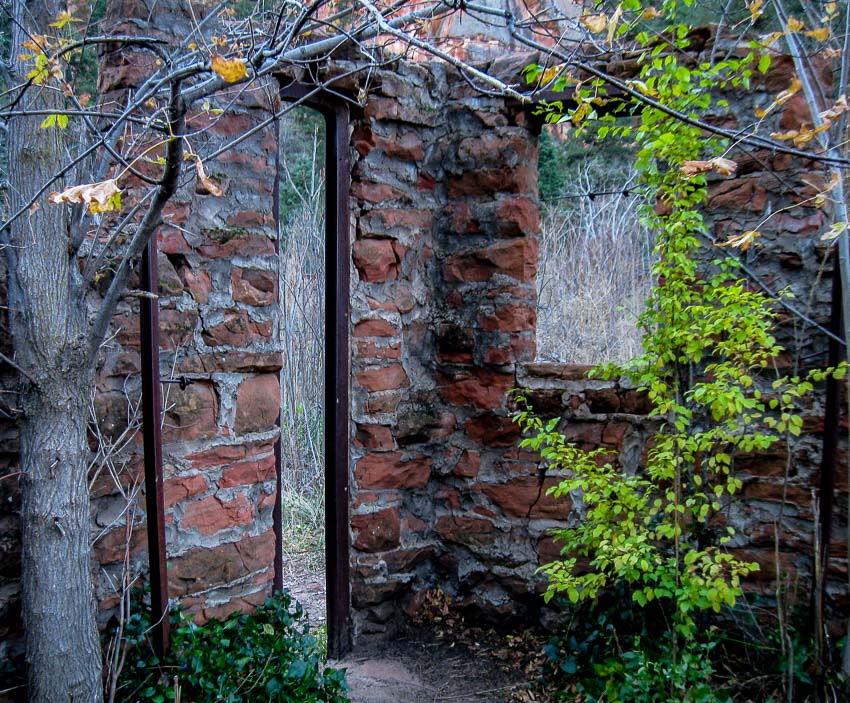
Perhaps President Hoover or Clark Gable gazed out this window to watch native wildlife.

Which celebrities or notables warmed themselves at this hearth?
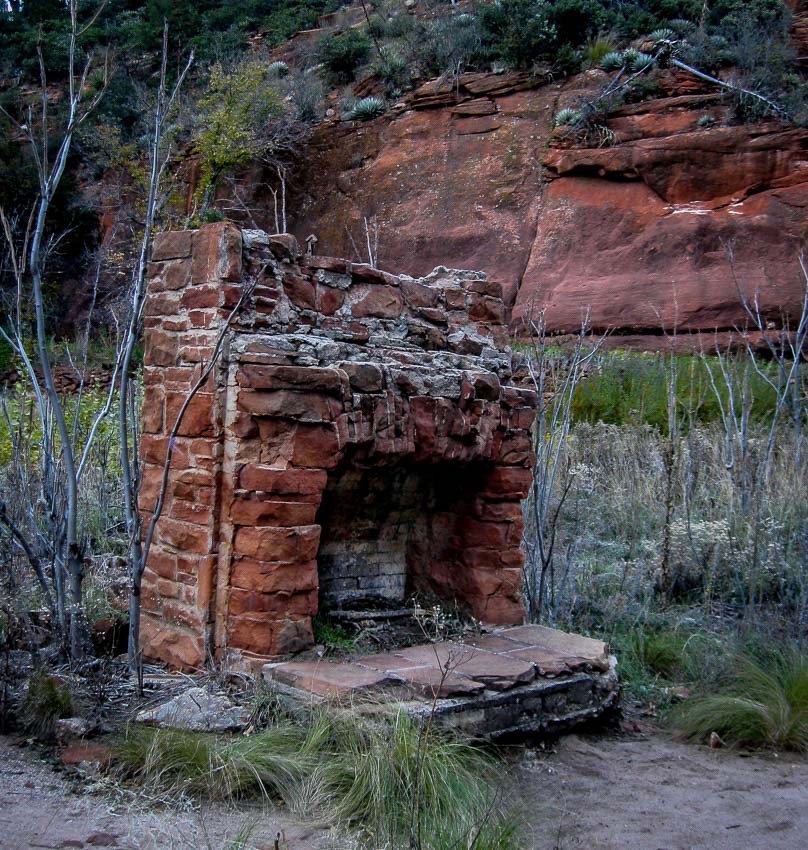
The short video shows the outbuildings and a few shots of the lodge.
Even more information and pictures HERE:
We had a good day along the West Fork of the Oak Creek. We were damp, cold and tired and welcomed the heated seats and warm air provided by our Subaru Forester as we made our way back to the Valley of the Sun.
If you missed the previous posts about our hike along the West Fork of the Oak Creek, you can find them here:
